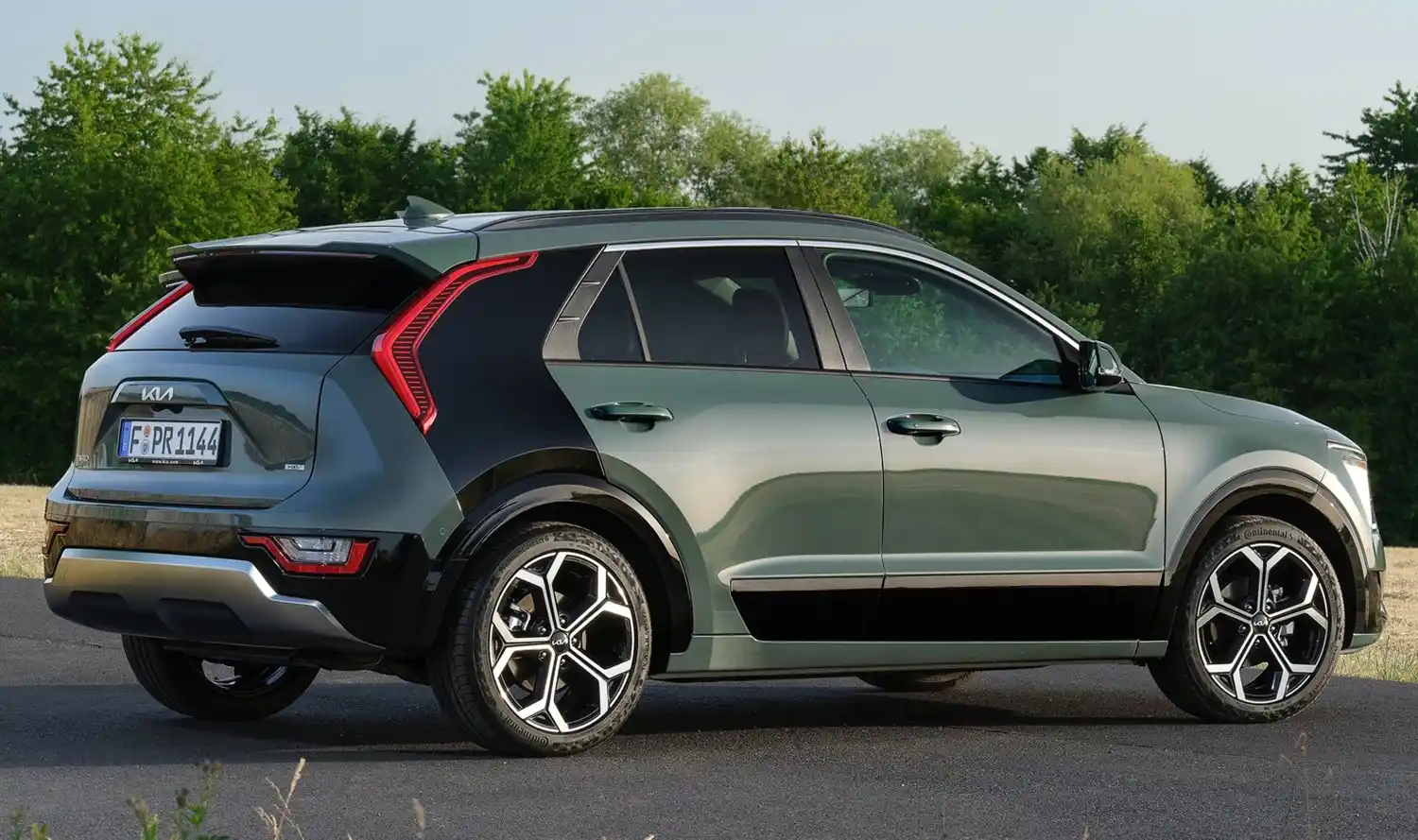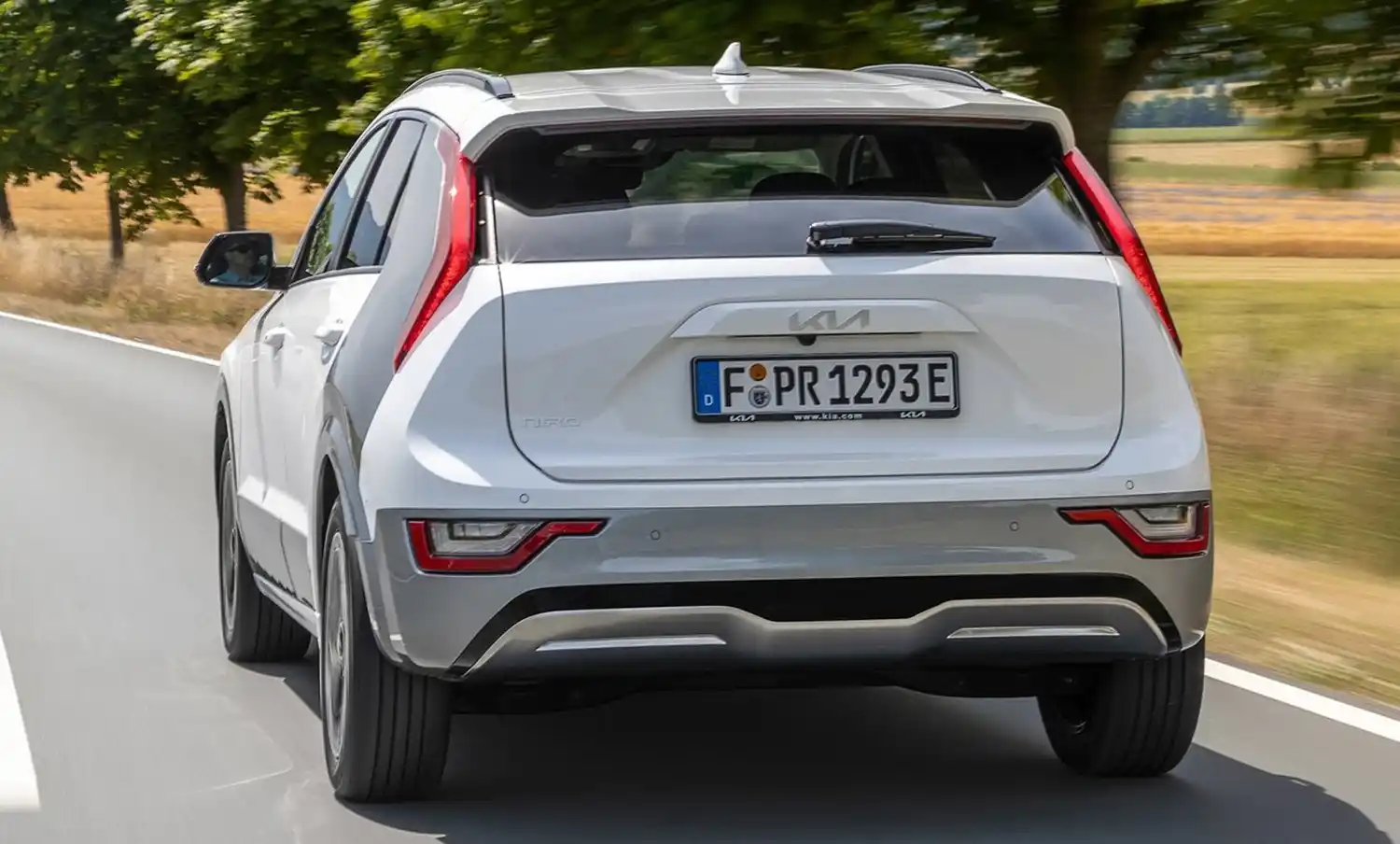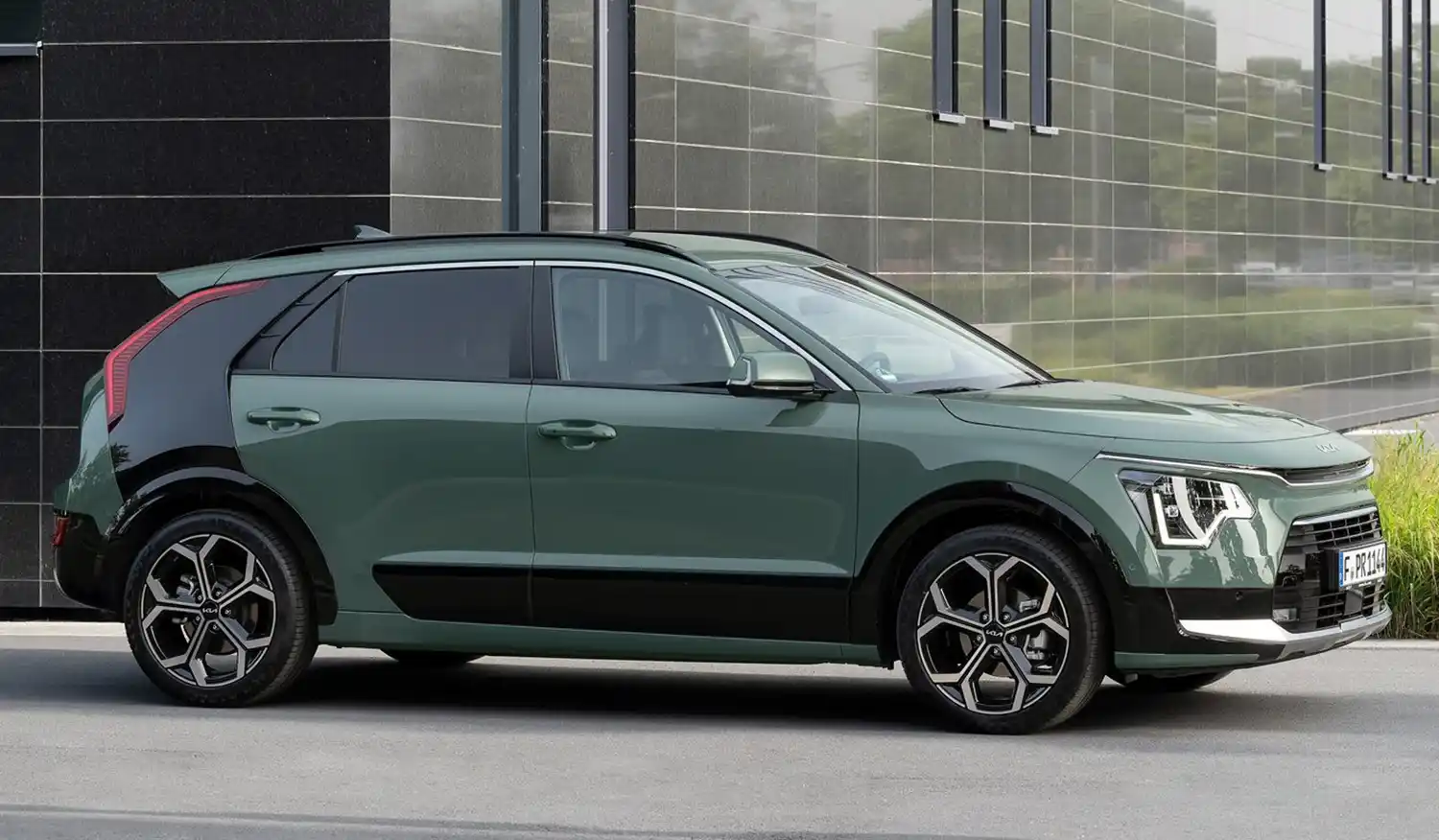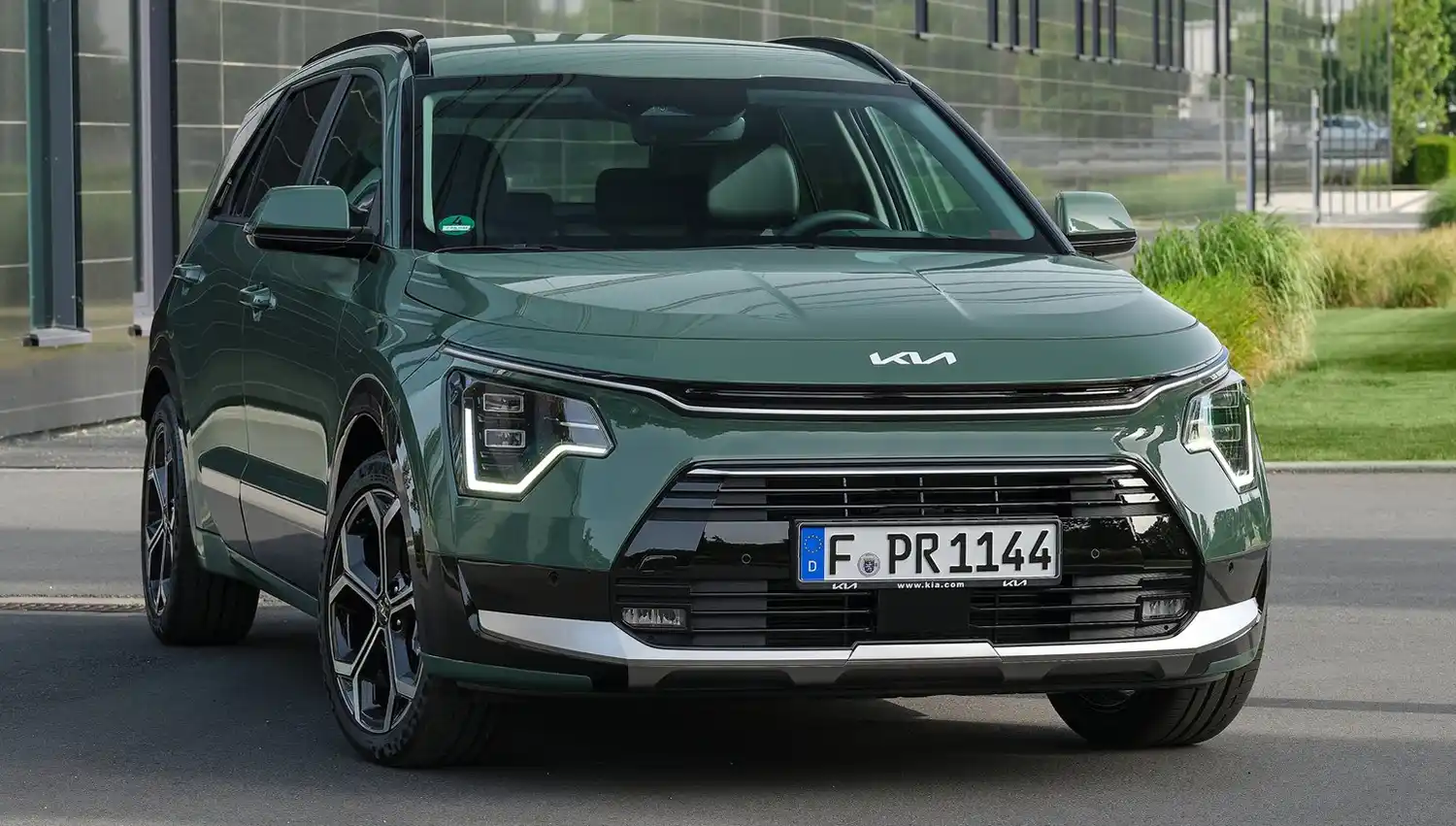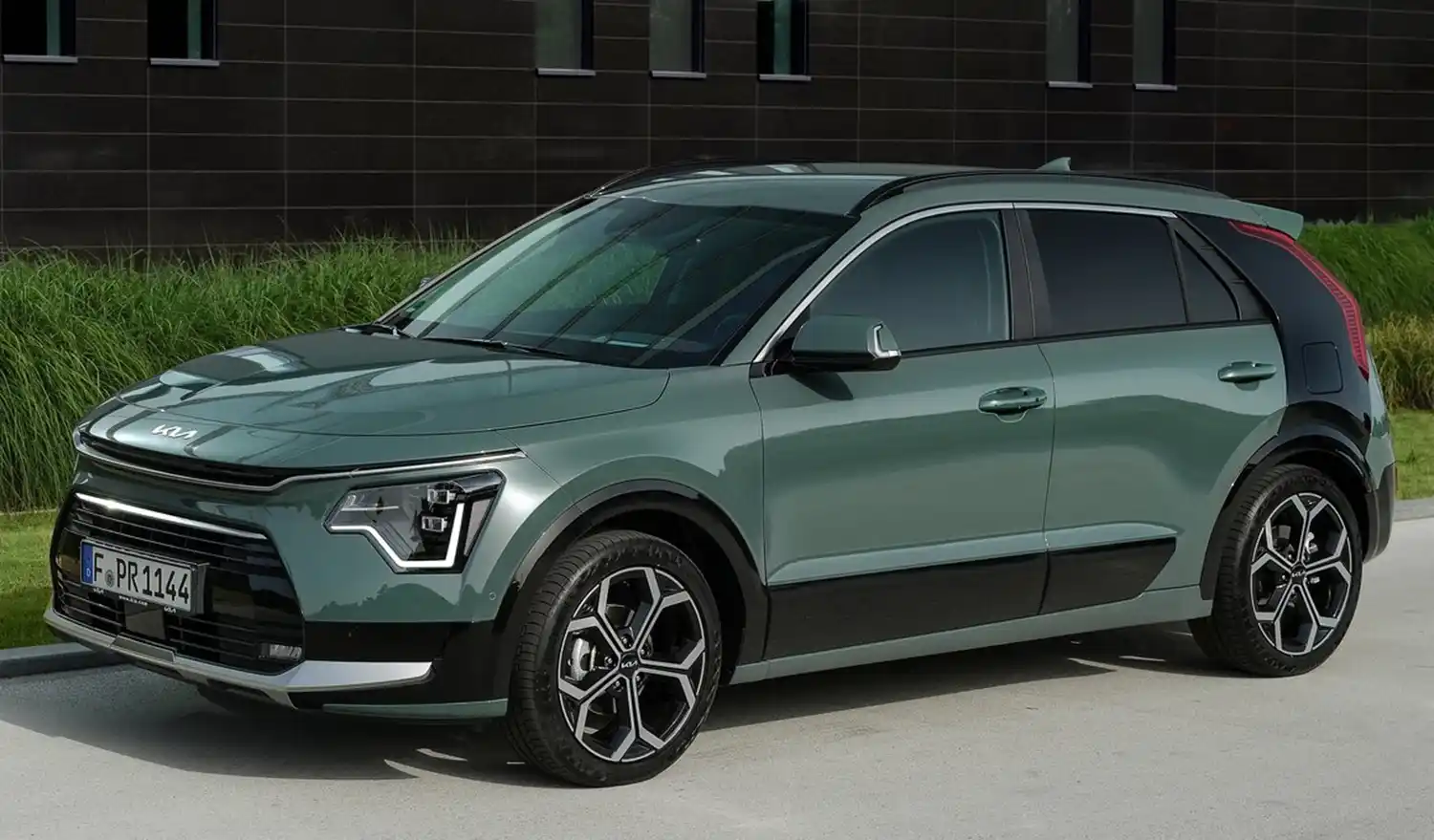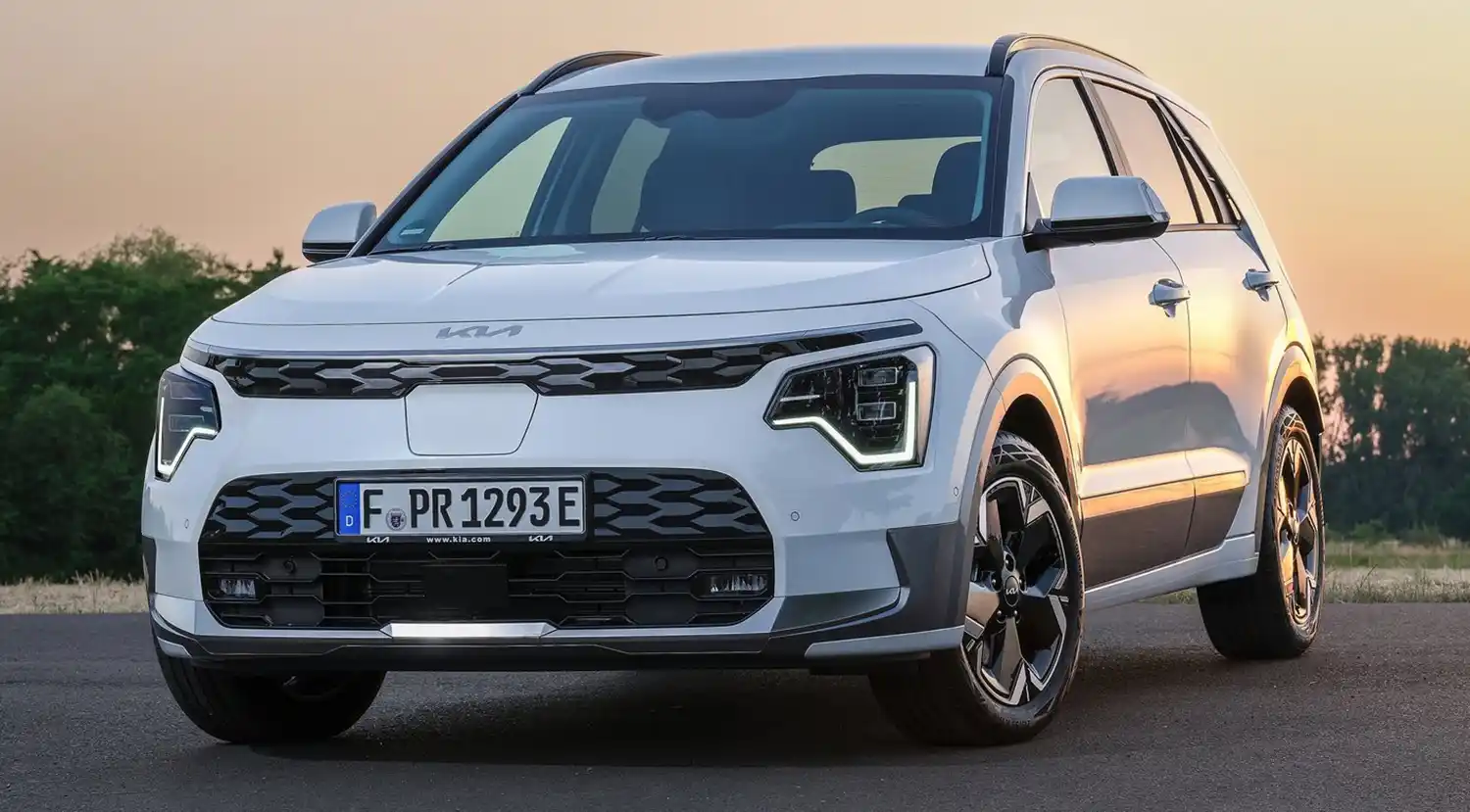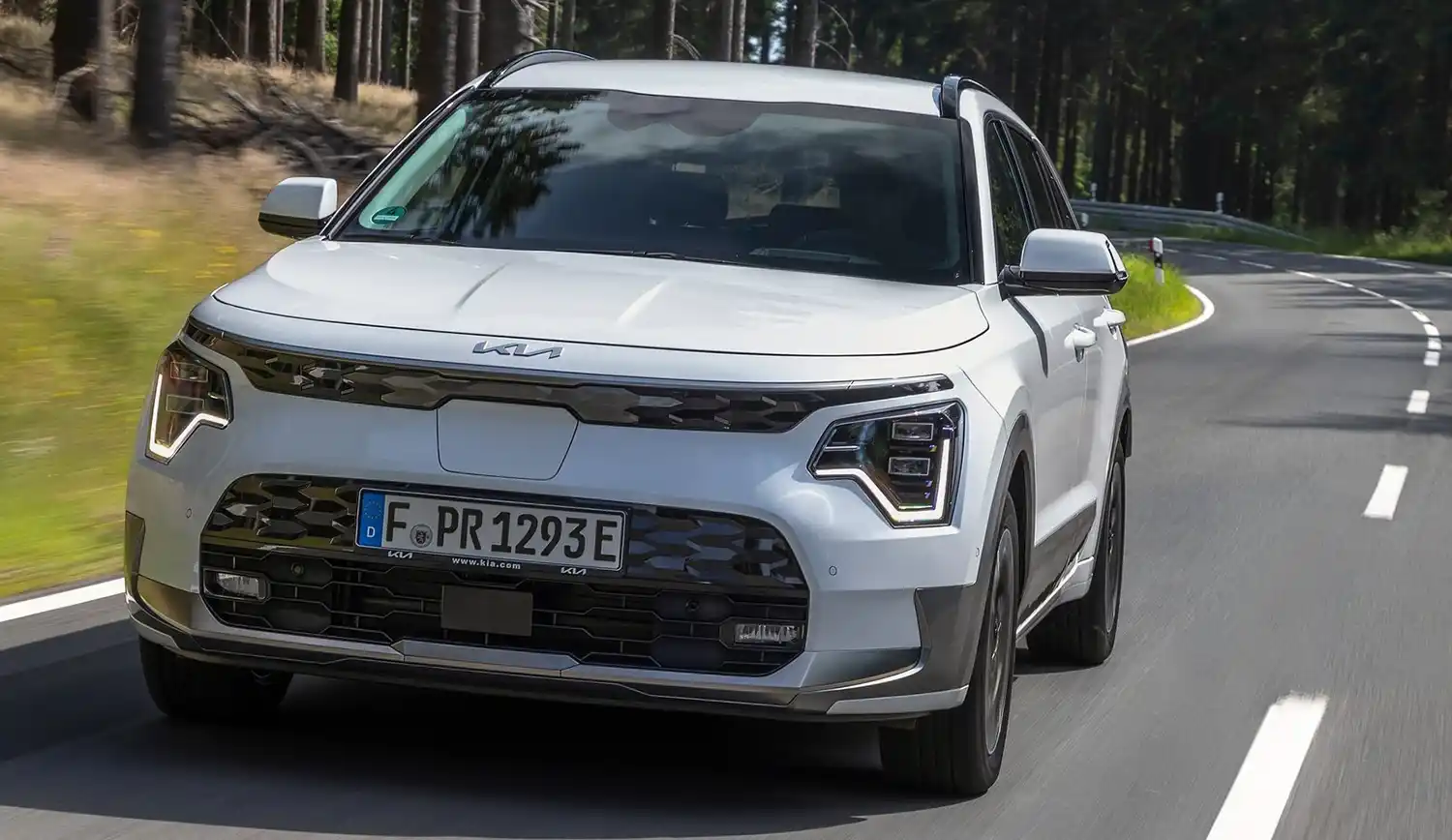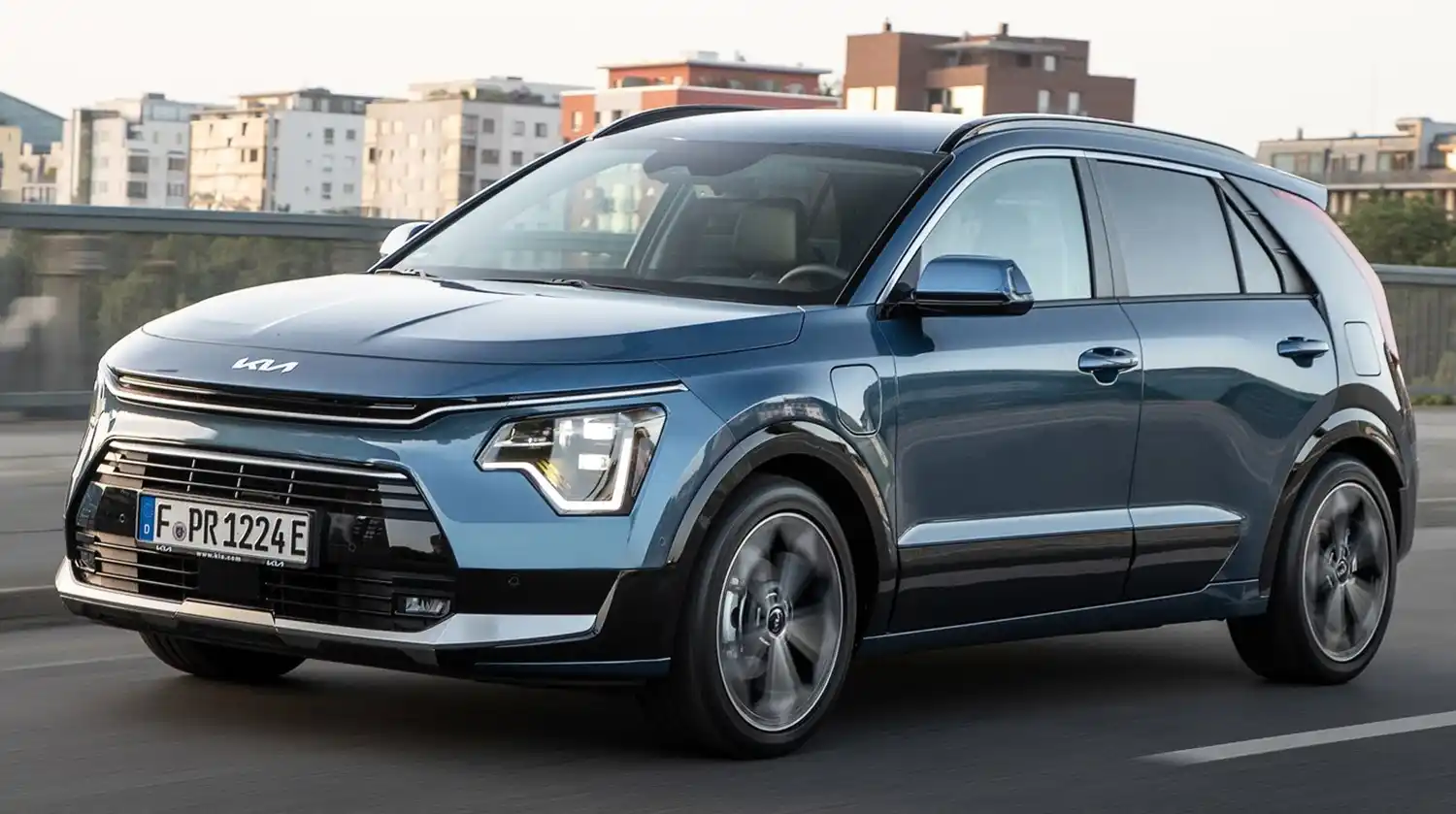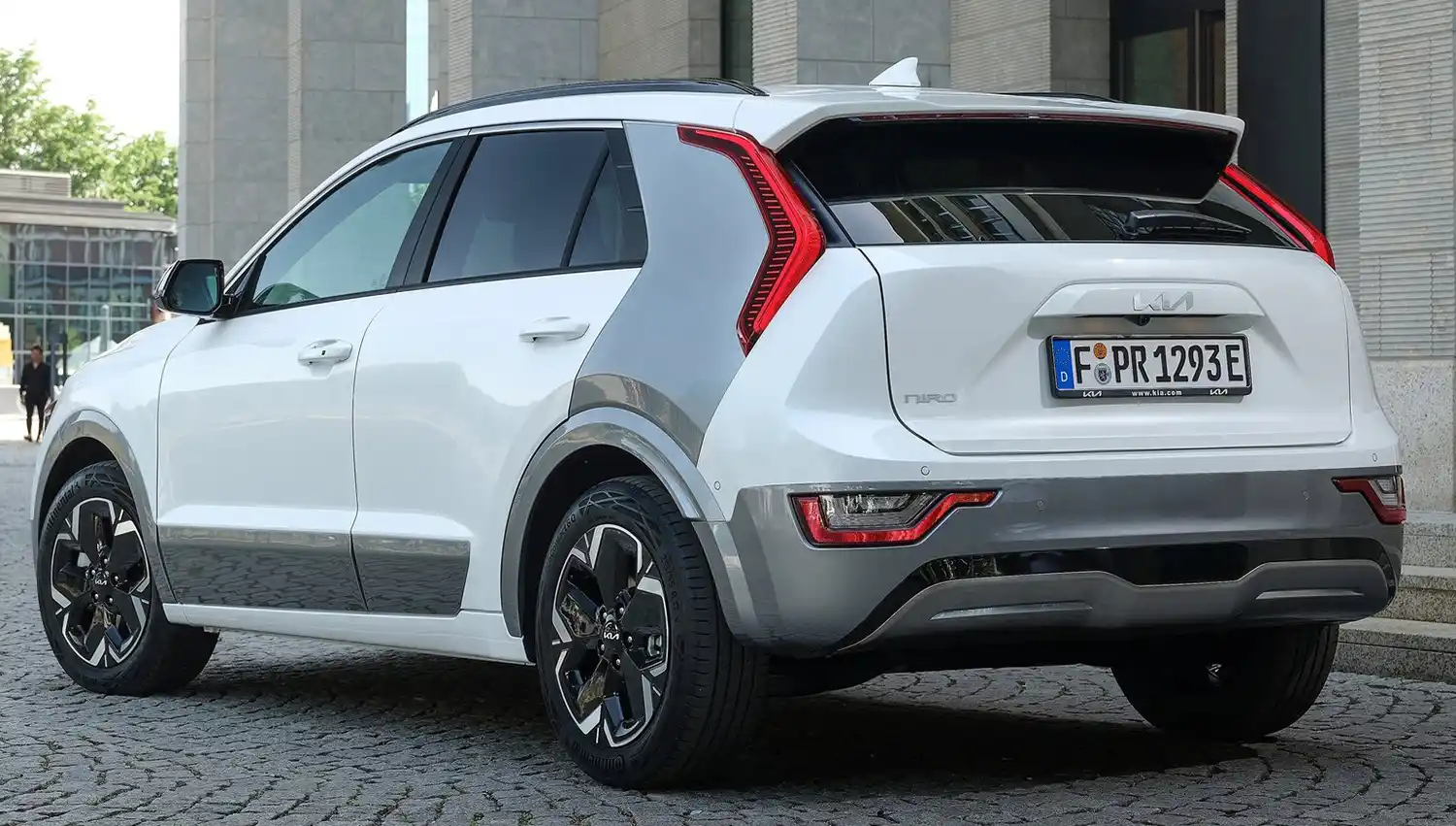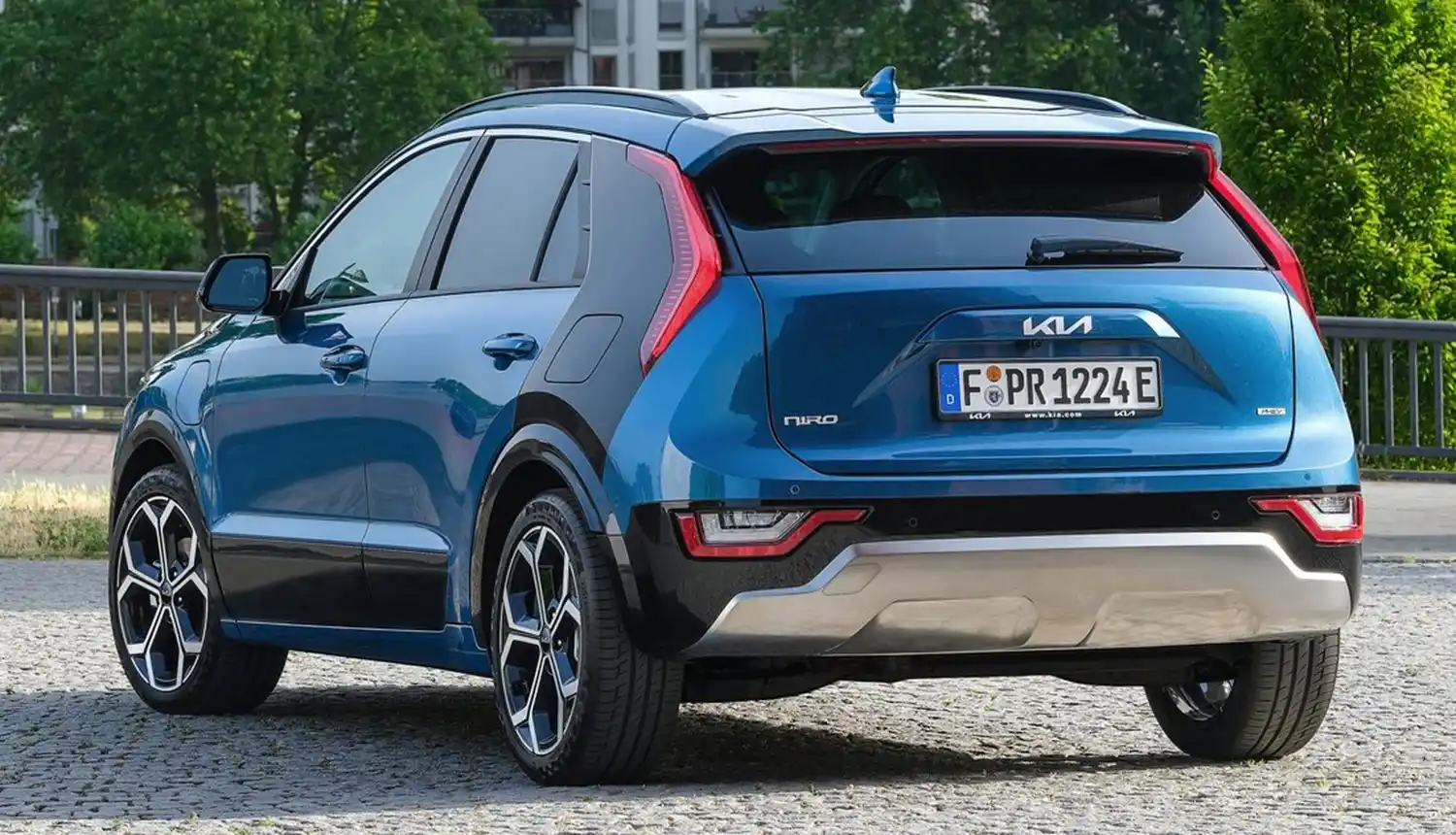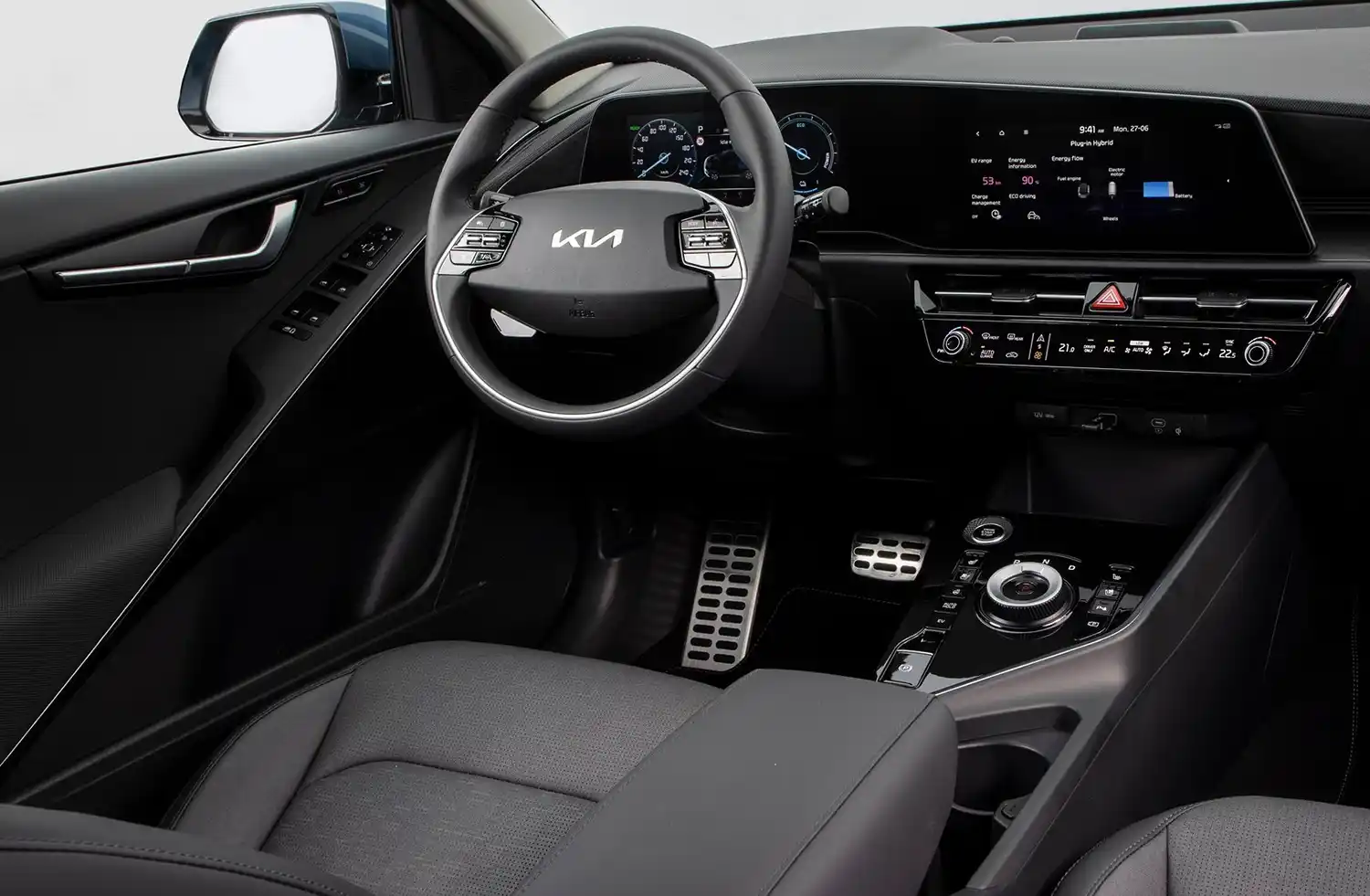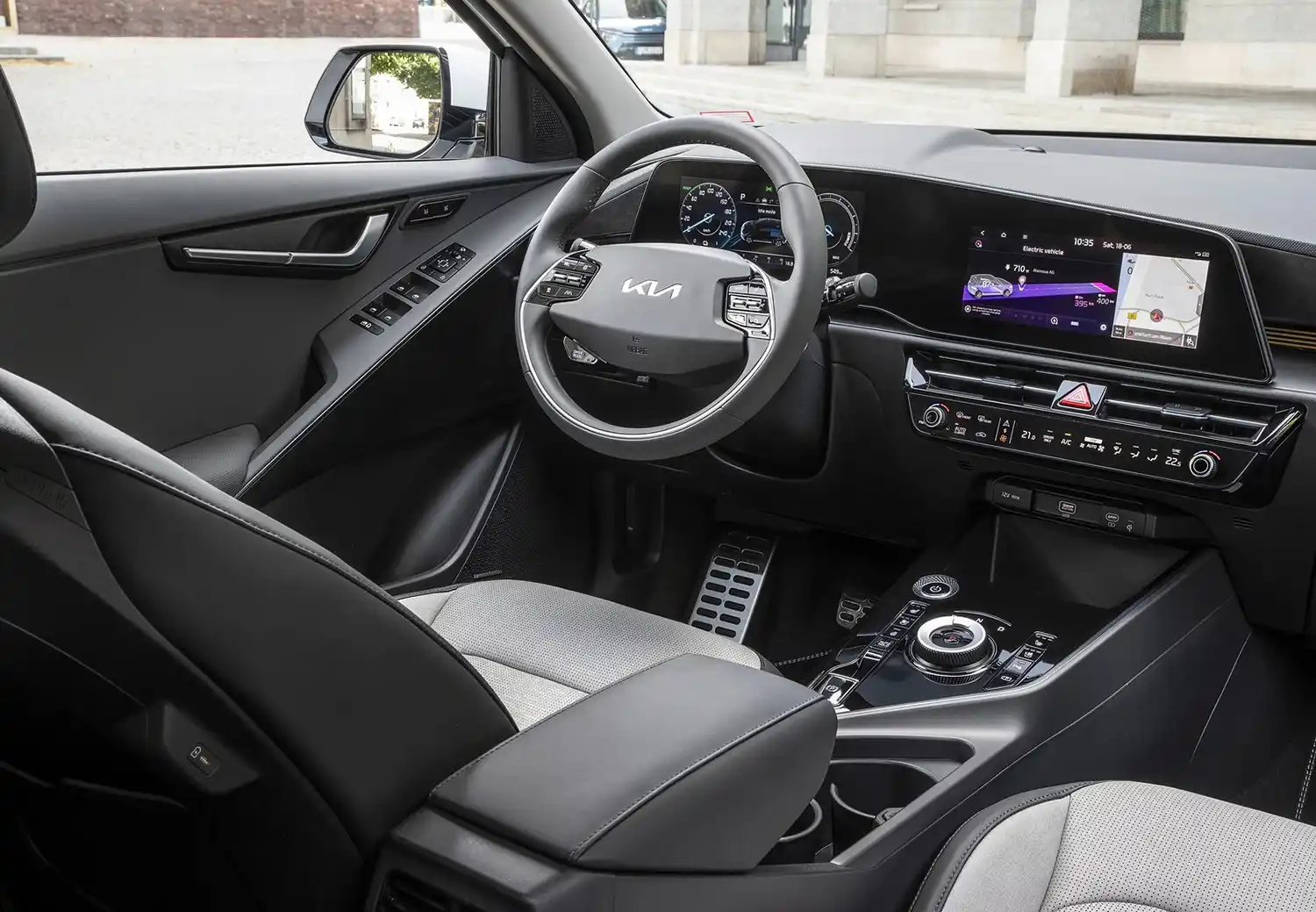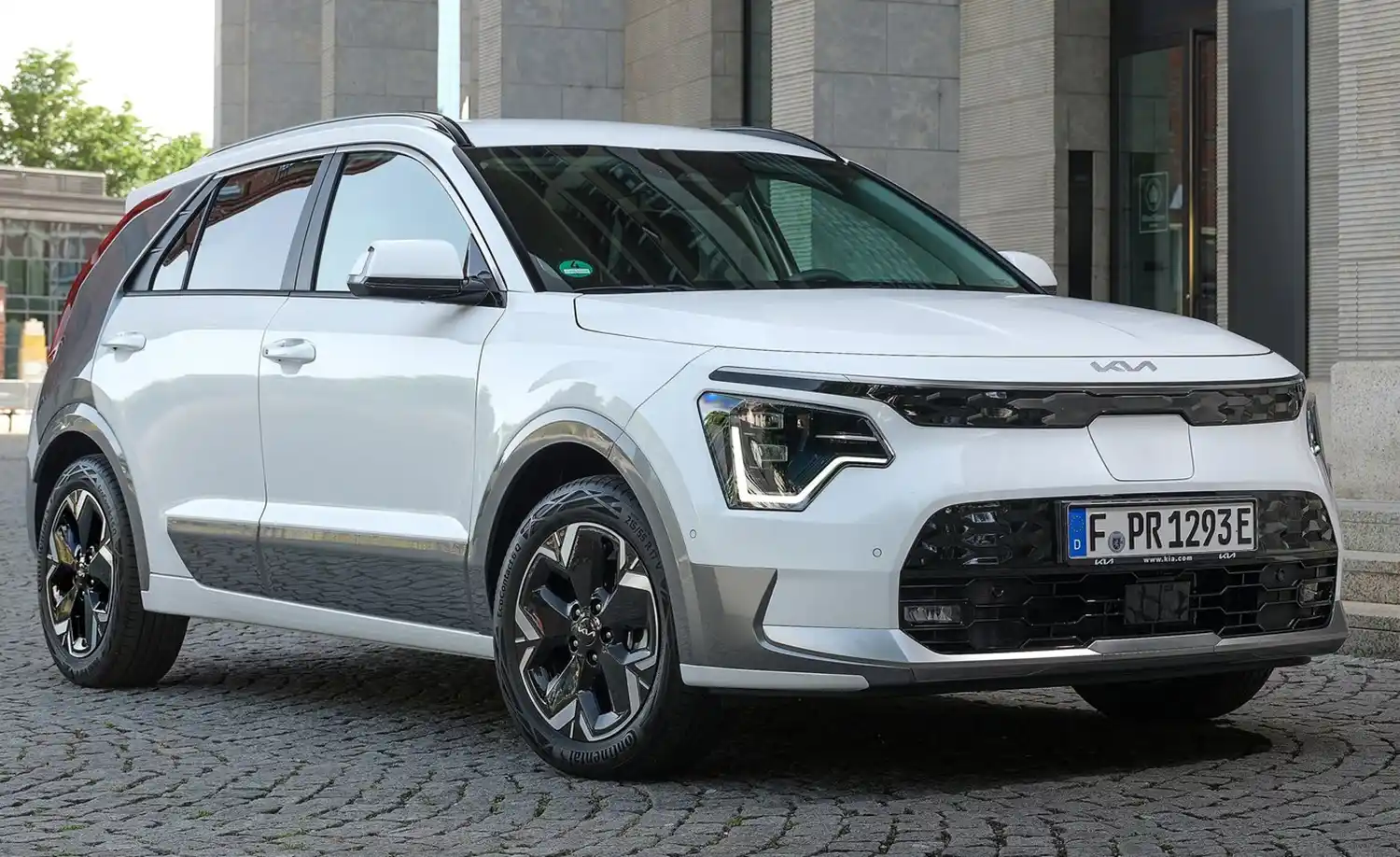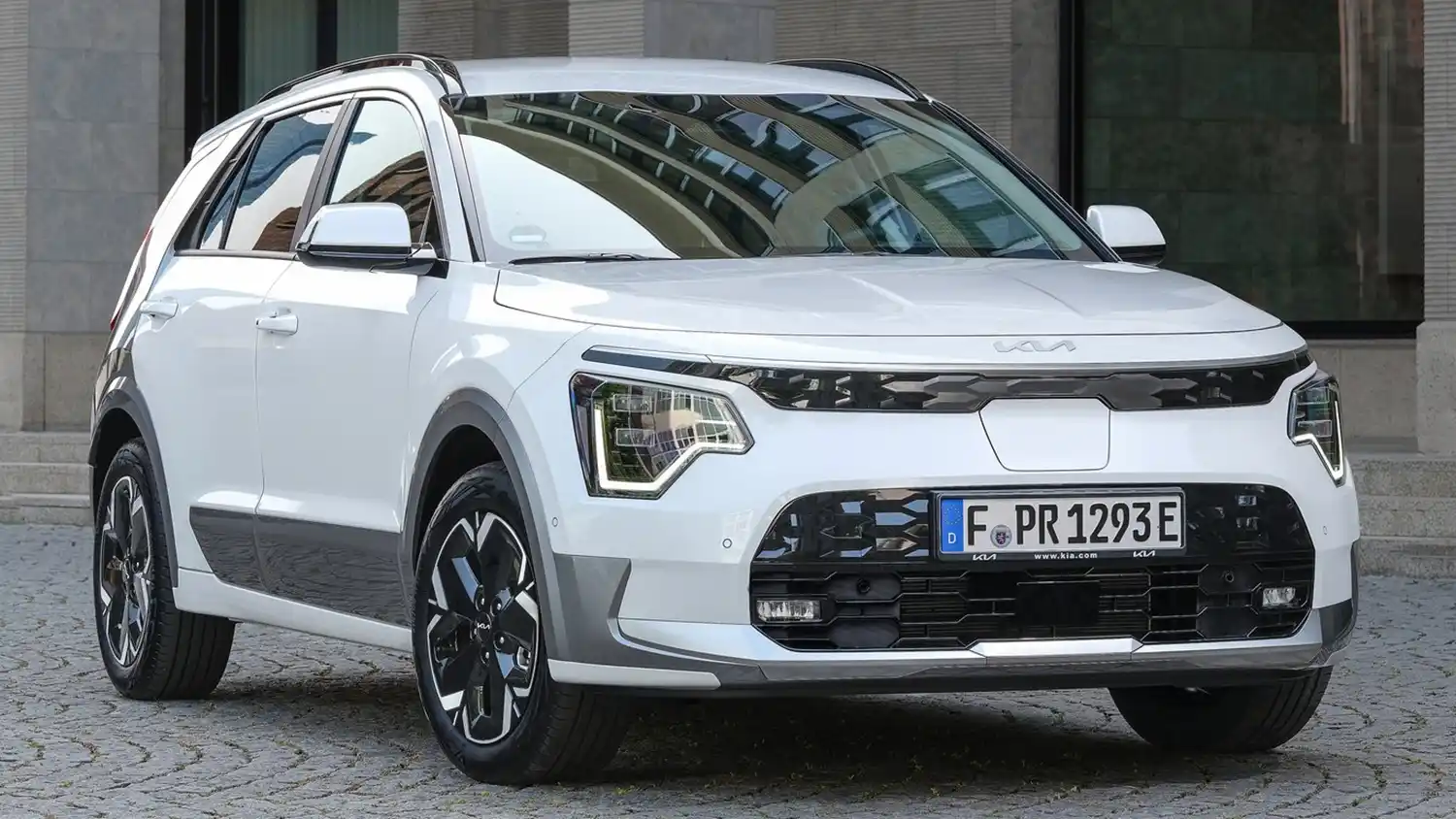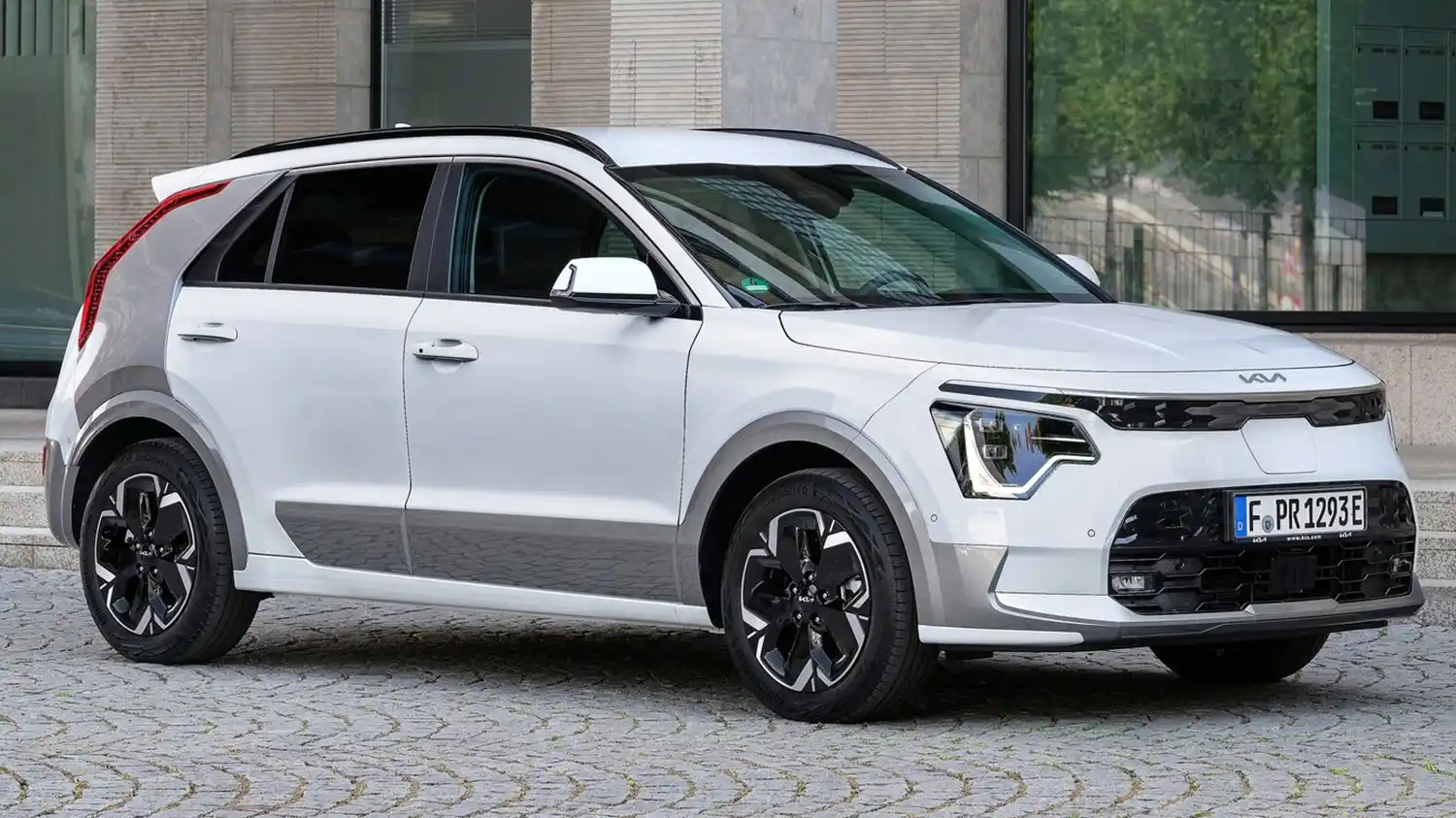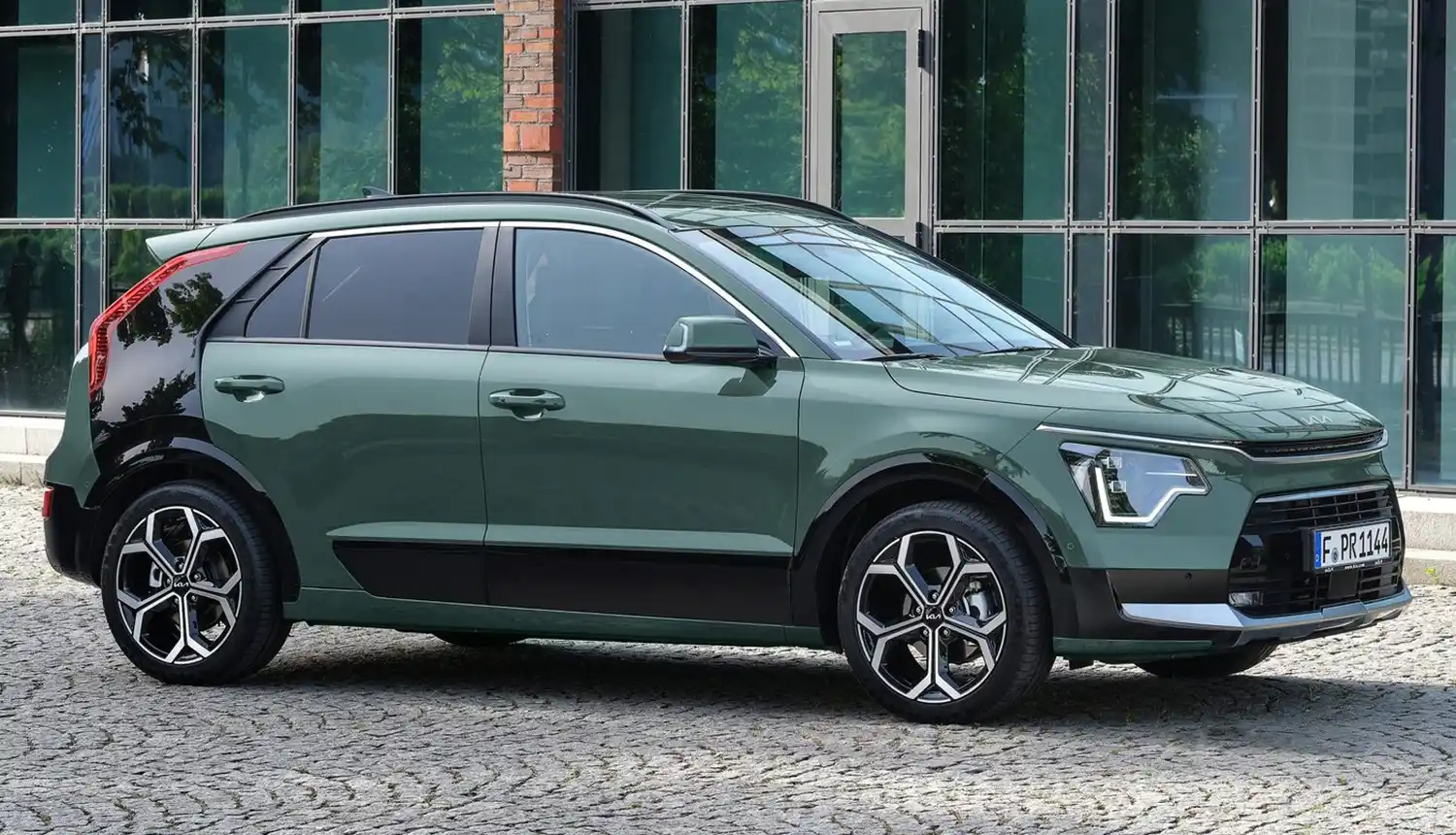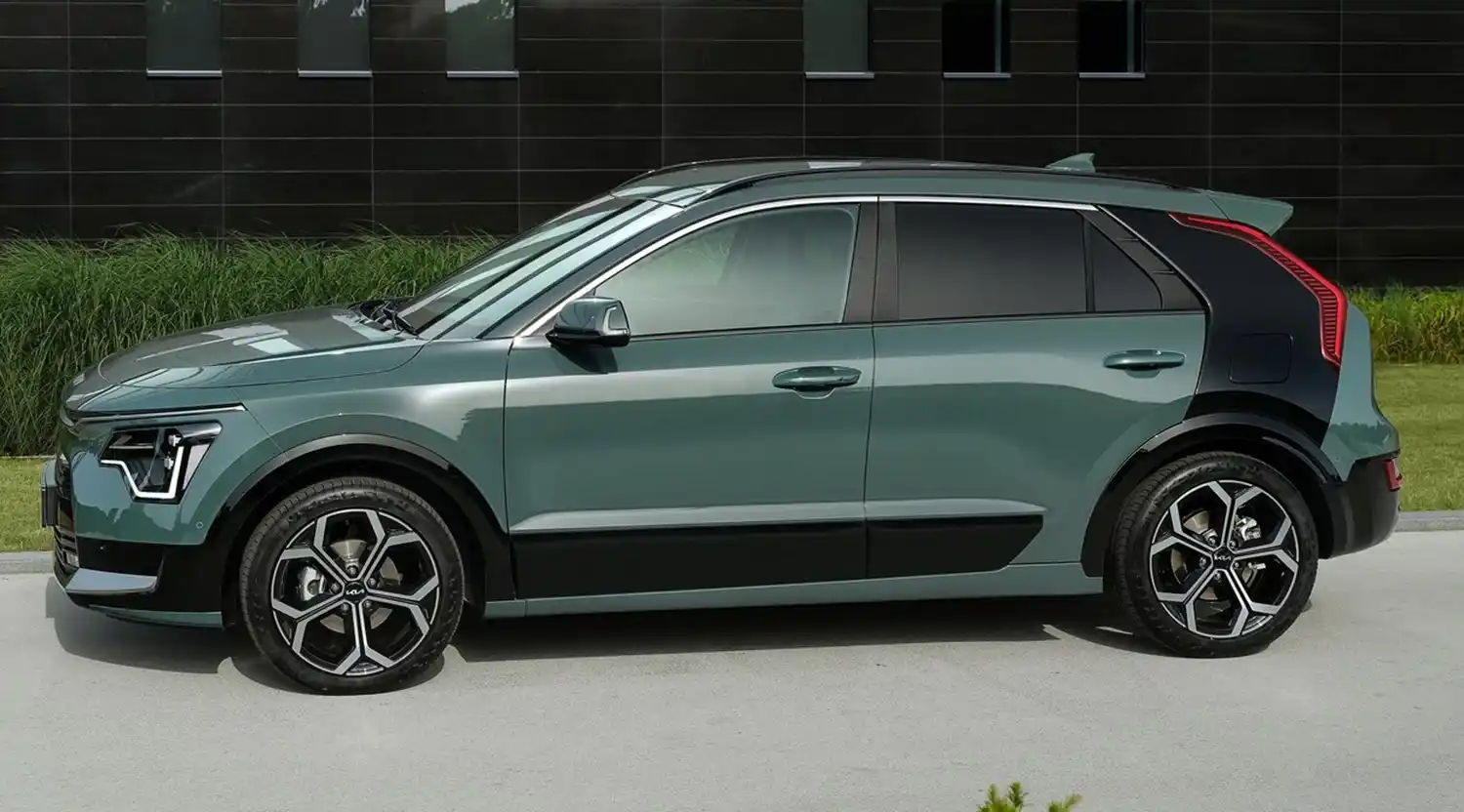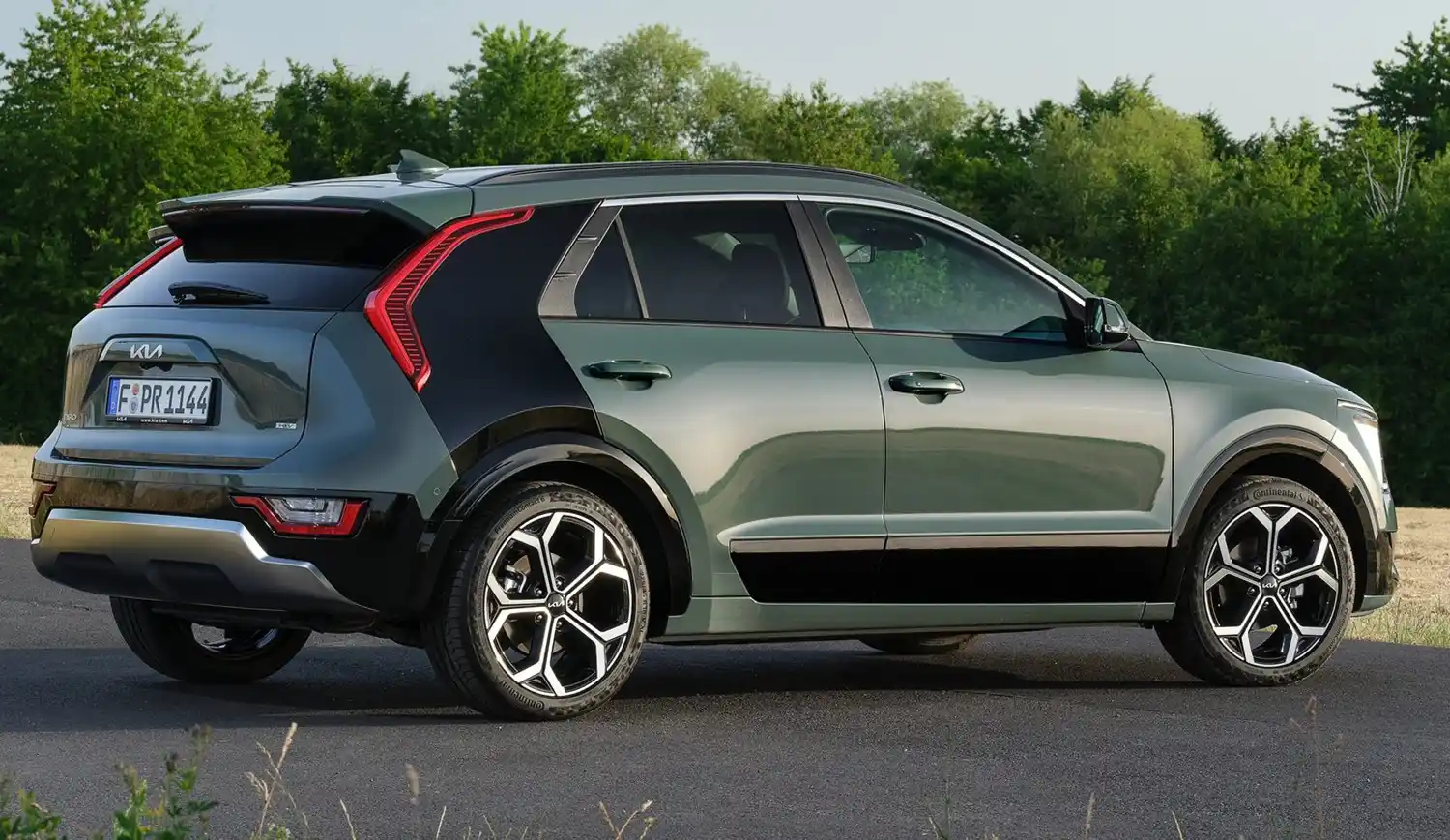
Kia’s popular Niro crossover has been entirely redesigned from the ground up to meet the complex and diverse needs of today’s environmentally conscious car users. Three state-of-the-art electrified powertrains, sustainable interior materials and exceptional safety performance combine to ensure the all-new version surpasses customer expectations. The redesigned Niro is a key model in Kia’s growing eco-friendly line-up, which will include 14 BEV models by 2027.
The compact crossover utility vehicle (C-CUV) segment is one of the most competitive, with a dizzying array of models on offer. The all-new Niro illustrates Kia’s fresh approach to the traditional crossover vehicle and provides important differentiators that make it stand out in a crowded segment. A perfect blend of form and function, the all-new Niro is a safe, family-friendly vehicle with favourable economic and environmental credentials that will encourage many people to take a meaningful first step into electrification.
The all-new Kia Niro smooths the transition to sustainable mobility via a choice of low- and zero-emission powertrains: hybrid electric (HEV), plug-in hybrid (PHEV) and battery electric (BEV). The HEV and PHEV models feature Kia’s super-efficient Smartstream 1.6-litre GDi petrol engine. The battery electric Niro EV provides environmental and practical benefits with a 285-mile (WLTP) range.
Jason Jeong, President of Kia Europe, said, “Kia has reimagined the Niro to provide potential customers with a clearer path to clean mobility, and the range of eco-friendly powertrains will encourage even the most hesitant customers to make the switch.
“The all-new Niro benefits from Kia’s latest technology advancements and can meet the mobility needs of all drivers, attracting new people to the brand. The Niro is Kia’s third best-seller in Europe (second in the UK), and the new generation will further extend its position as a volume model within the Kia portfolio and help accelerate Kia’s global sales of eco-friendly vehicles to two million units in 2030.”
At 4,420mm long, 1,825mm wide without door mirrors, and up to 1,570 high, the clean-sheet redesign of all-new Niro is based upon Kia’s third-generation ‘K’ platform. The 2,720mm wheelbase and enhanced design proportions inside the cabin reward occupants with outstanding space and storage capacity.
Premium-effect recycled materials adorn the cabin, enriching the ambience and underlining Niro’s sustainable credentials. Minimal clutter and smooth lines ensure a distraction-free yet intuitive user experience. A head-up display (HUD) system enhances safety and convenience on the move, while a suite of new safety systems brings the latest advancements in protection.
“Niro currently occupies an important position in the Kia line-up, providing an accessible electrified model at volume. It is a crucial model for Kia and it was natural that, following our rebrand, Niro was also re-imagined. The all-new model will offer existing customers the Kia heritage they value while also broadening the brand’s appeal to new environmentally conscious buyers,” concluded Jason Jeong.
Niro – number two in the UK
The Niro has grown to become an important contributor to the astonishing rise in Kia sales in the UK, with the Niro the second biggest-selling model. To the end of June 2022, around 78,000 examples have found homes in the UK since its arrival on the market in 2016, and every year there has been significant growth in registrations. For example, in 2020, a difficult and disruptive year for most car makers, the Niro doubled its sales volumes. Also, in 2021 and for the first half of 2022, the e-Niro was the second biggest selling electric vehicle in the UK’s new car registrations charts.
Kia offers one of the most comprehensive electrified model ranges in the UK market, with the Niro Hybrid, Plug-in Hybrid and EV variants making up a nine-strong range. They join the EV6 and Soul EV, along with the Sorento and Sportage Hybrid and Plug-in Hybrid, and XCeed Plug-in Hybrid. The EV6 GT will become Kia’s 10th electrified model when sales commence.
During 2021, Kia’s electrified sales accounted for one-third (32%) of its new car registrations in the UK market. This is in addition to the mild hybrid technology that is also employed across the Kia line-up.
DESIGN AND PACKAGING
The all-new Kia Niro features an interior designed to appeal to the senses, with premium quality materials and welcoming, textured surfaces that combine to create an avant-garde feel throughout. The driver-oriented dashboard incorporates bold horizontal and diagonal lines, while ambient mood lighting, available in no fewer than 64 colour combinations, can be tailored to en the senses or create a warm and serene environment.

Positioned between the diagonal lines lies a high-tech panoramic high-definition digital display screen that integrates both the instrument cluster and infotainment features in one streamlined package (standard on ‘4’ grades). The system has been designed to be easy to use on the move, with pin sharp graphics and a highly intuitive layout. Users can personalise, access and operate the vehicle’s connectivity, usability and functionality features with ease and confidence.
Below the centre screen lies the multi-mode display for infotainment and climate control, removing clutter for a clean and coherent look, and ensuring front seat occupants can access these primary functions without the need to scroll through multiple menus.
Within easy reach is the Niro’s stylish centre-console that incorporates a modern look with a black high-gloss finish. Here, the driver can operate the Niro’s electronic rotary dial shift lever (on ‘2’ EV, and all ‘3’ and ‘4’ grades), the design of which saves space and is convenient and intuitive to operate. A wireless smartphone charging pad are also close to hand, standard on ‘3’ and ‘4’ grades.
The all-new Kia Niro’s dimensions have grown over its predecessor; it is now 4,420mm long (up by 65mm), 1,825mm wide (up by 10mm), a 1,545mm tall (up by 10mm), and with the wheelbase now at 2,720mm (up by 20mm). As a result, the all-new Niro awards its occupants with a spacious environment where they can relax, get comfortable and enjoy every journey.
Available with a choice of four stylish materials, the slim, contemporary seats enhance roominess and comfort thanks to a lightweight high-tech seat mechanism. The front passenger relaxation seat can recline for a comfortable lying posture at the touch of a button on ‘4’ editions. The front seats incorporate USB-C terminals and storage pockets for the benefit of rear-seat occupants, while the slim dimensions of the headrests help to increase the general feeling of space.
By repositioning the Niro’s 12V battery alongside the high-voltage battery at the bottom of the rear seats, boot capacity for the Niro HEV model reaches an impressive 451 litres (VDA), up 15 litres compared to its predecessor. The plug-in hybrid features a 346-litre luggage space, while in the Niro EV it is 475 litres with the seats in the upright position. Tumble the seat back forward and this increases to 1,445 litres for the HEV, 1,342 litres for the PHEV, and 1,392 litres for the EV.
As a clear statement of Kia’s ongoing commitment to sustainability, the all-new Niro showcases new recycled materials inside the cabin. The headlining is made from recycled wallpaper, the seats are made from Bio PU with Tencel from eucalyptus leaves, and BTX-free paint is used on the door panels to minimize the impact on the environment and reduce waste.
Expressive and confident road presence
The all-new Niro’s exterior was guided by Kia’s Opposites United design ethos, specifically focussing on the ‘Joy for Reason’ design pillar that fuses the emotional with the rational to create vehicles that inspire movement. With a purposeful and head-turning exterior, all-new Niro brings much needed aesthetic appeal to the CUV segment.
The exterior embodies a sophisticated and adventurous sense of purpose heavily influenced by the 2019 HabaNiro concept car. At the front there is the latest evolution of Kia’s signature ‘Tiger Face’, which now extends to the front wings. The expansive windscreen features a unique double-cowl design where the top and bottom mirror each other for a sense of design uniformity. Angular ‘Heartbeat’ daytime running lights (DRLs) add to the contemporary look, while bold skid plates and cladding enhance the vehicle’s rugged character.
The EV version is distinguished from the PHEV and HEV models by a two-tone closed grille, and – on ‘4’ grades – a unique Steel Grey side cladding option (or high gloss black as standard). The Niro EV has also received a dedicated lower grille and bumper treatment in addition to model-specific aerodynamic 17-inch alloy wheels of a single design. The charging port for the EV model is conveniently positioned in the centre of the front grille for ease of access at all charge points.
When viewing the side profile of all-new Niro, the eye is guided by simple character lines and the bold Aero C-pillar towards the rear. This has been carefully crafted to manage airflow through a cavity for improved aerodynamic performance, helping the car achieve an impressive co-efficient (Cd) of 0.29.
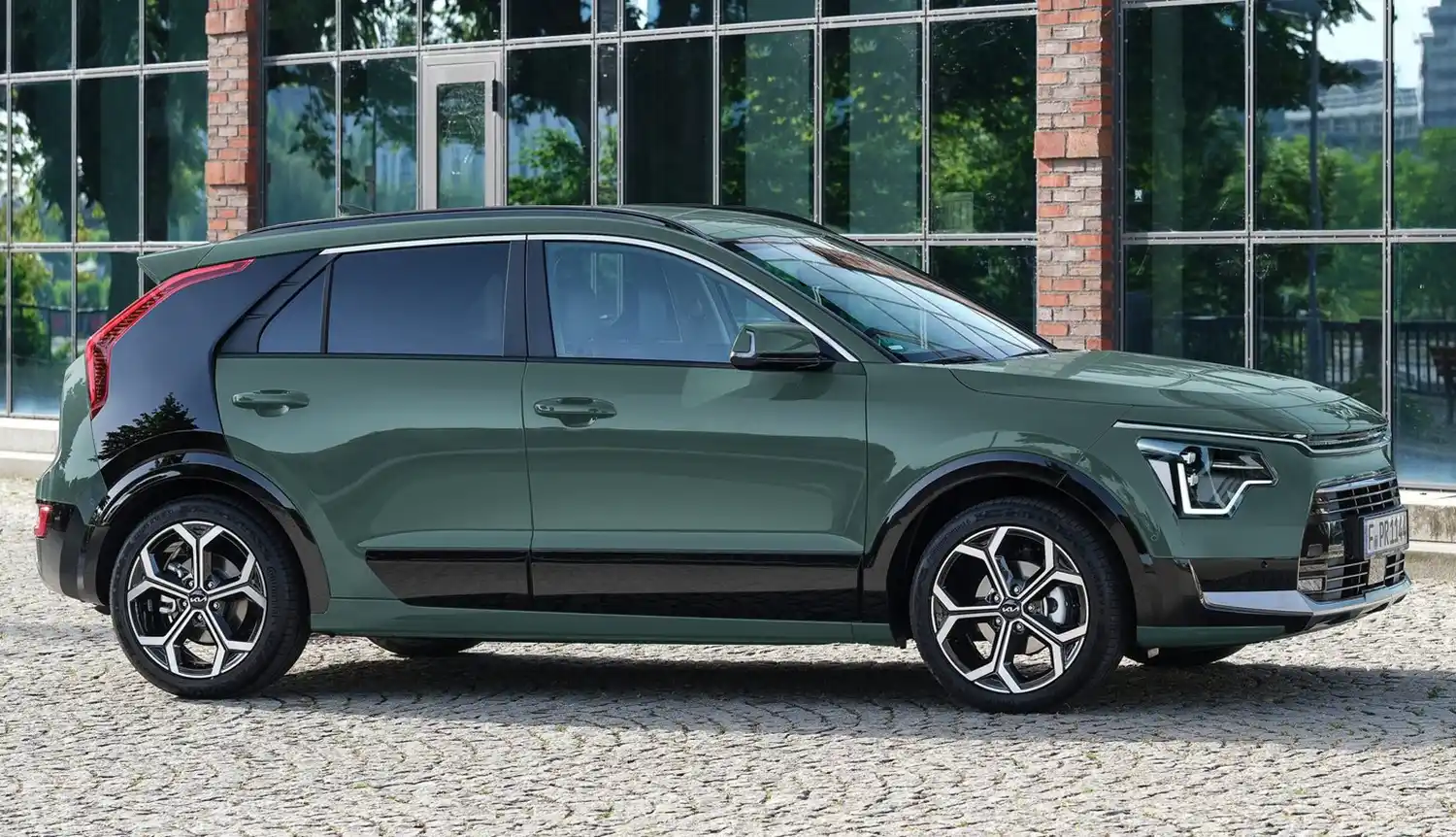
Moving along the side profile and past the C-pillar, boomerang-shaped LED taillights emphasise the vehicle’s sporty stance and sense of purpose. These sit alongside an uncomplicated registration plate moulding that houses the plate and Kia logo, while the heartbeat-shaped rear reflectors, rugged skid plate and strong diffuser echo design elements from the front.
Customers can choose from eight modern exterior colours: Cityscape Green, White Pearl, Midnight Black, Mineral Blue, Interstellar Grey, Orange Flame, Runway Red and Steel Grey. Further personalisation options include the choice of C-pillar colours that contrast or complement the body colour, and up to three different finishes for the cladding, depending on the trim level and powertrain chosen.
DYNAMICS
Developed from the ground up, the all-new Kia Niro is based upon the third-generation K platform that has been specifically engineered to accommodate the three available powertrains. This latest architecture applies a ‘multi-load pass’ structure for optimal front crash performance, as well as facilitating suspension and steering improvements and enhancing design proportions and interior space.
The K architecture allows for various battery mounting options depending on the powertrain; beneath the rear seats for the HEV, boot floor for PHEV variants, and centrally for the EV version. Each configuration ensures an ideal weight distribution to optimise ride quality, particularly in the Niro EV where the underfloor arrangement leads to a lower centre of gravity. This all pays dividends when cornering, reducing roll and contributing to an engaging, predictable drive.
The all-new Kia Niro has received suspension and steering improvements to deliver an enjoyable and responsive drive. At the front there is MacPherson strut-type suspension, while the rear gets a four-link arrangement. Both front and rear geometry, together with an optimised steering gear ratio, have been tuned for improved responsiveness, stability, and ride comfort. A new tilt-type bearing reduces the friction in the front suspension strut and enables a smoother start of damper motion. It also reduces the friction in the steering system that, together with steering software tuning, provides a very natural steering feel with excellent feedback.
Additional insulation and padding have been inserted around the vehicle’s structure to help combat unwanted engine and road noise to boost refinement – especially important when running the near-silent BEV version. Other engineering advancements include a modest increase in torsional rigidity, delivering improvements in ride, handling, and steering behaviour.
A significant increase of 22 per cent in the proportion of high-tensile strength hot-stamping steel serves to improve efficiency and safety. Additionally, while the body in white weight was reduced by 6 per cent (20.3kg), the torsional stiffness was increased by 1 per cent through structure and material optimisation.
Dynamically, the all-new Niro builds on the qualities of its popular predecessor, with a quiet and comfortable ride, and faithful, linear responses to driver inputs. From behind the wheel the car feels safe, secure, and stable in all conditions, echoing the all-new fifth-generation Sportage with a calm and unflappable demeanour around town and at high speeds.
Compared to the outgoing Niro, when pressing on, the handling is more composed and predictable, notably thanks to steering that is more direct and more accurate in its response to driver inputs.
POWERTRAINS
For the all-new Niro, Kia has simplified the customer decision-making process, providing three distinct powertrain options designed to meet the demands of every customer’s lifestyle. At the core of this strategy lies a trio of eco-friendly powertrains.
The PHEV and HEV models benefit from Kia’s Smartstream 1.6 GDi petrol engine paired with Kia’s own second-generation six-speed dual-clutch transmission (6DCT). The innovations on the second-generation GDi engine include low-friction ball bearings, gears optimised for transmission efficiency, and the removal of the reverse gear that saves 2.3kg on its own. Reverse motion is instead delivered by the electric motor, helping to eliminate tailpipe emissions during reverse manoeuvres.
The four-cylinder 104bhp 1.6-litre GDi petrol unit produces a combined maximum power output of 139bhp when paired with the HEV’s 32kW (43bhp) permanent magnet synchronous electric motor. A 62kW (83bhp) e-motor in the PHEV version results in combined maximum power of 180bhp and provides an electric-only range of up to 40 miles (WLTP combined, with 16-inch wheels), sufficient for the needs of most UK drivers and their daily commute.
The Niro PHEV debuts Hyundai Motor Group’s very first 5.5kWh high-volt Positive Temperature Coefficient (PTC) heater for ‘3’ and ‘4’ grade Plug-in Hybrid models, enhancing electric-only performance in colder conditions. The self-regulated ceramic elements provide cabin heating to complement the vehicle’s heating core and ensure a continuous flow of warm air.
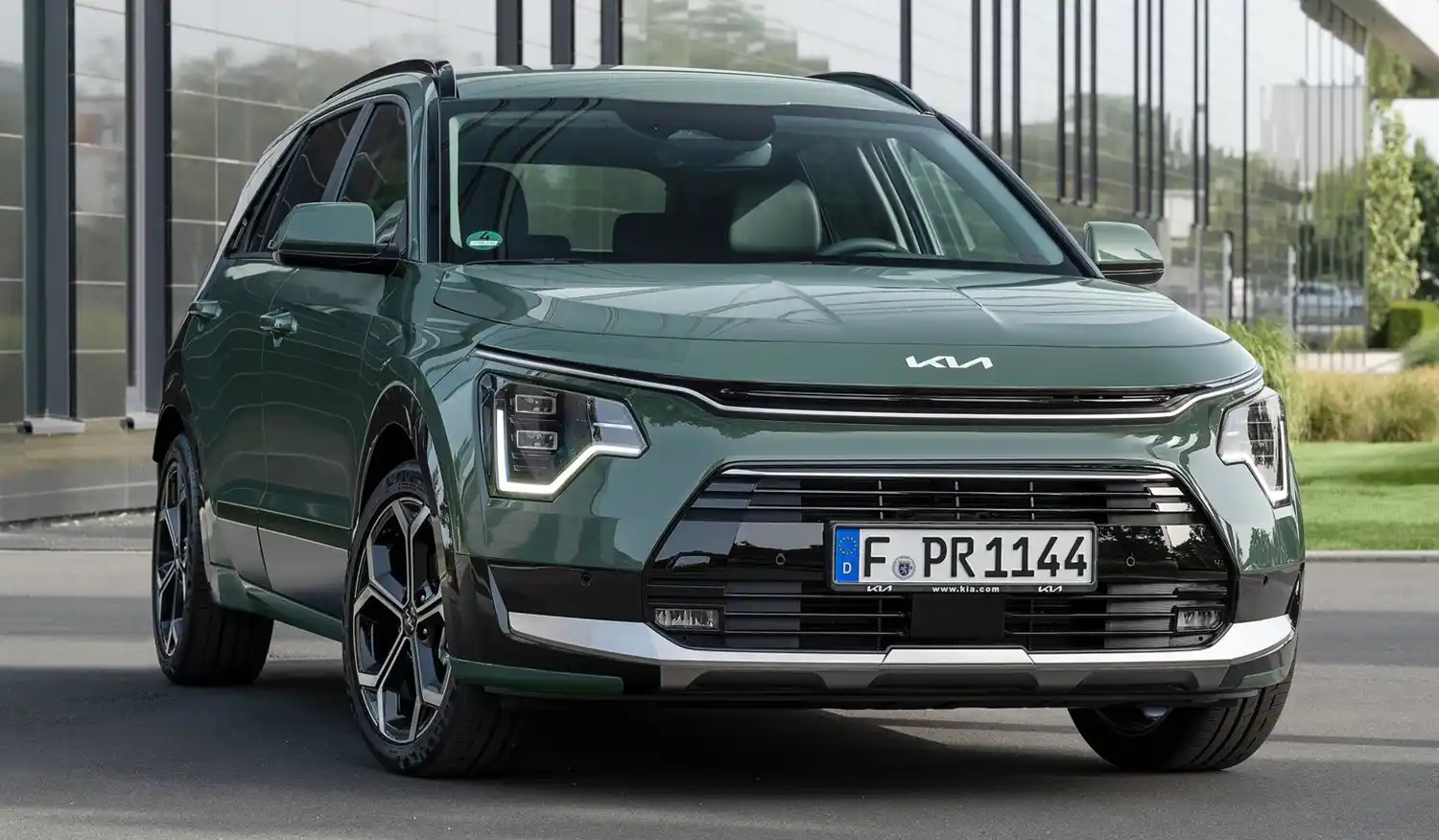
An intelligent Green Zone Drive Mode on Niro HEV and PHEV automates the use of electric power by taking location guidance from the navigation system, learning driving patterns, or can be personalised with manual inputs from the driver. Built-up areas or roads nearby schools and hospitals can be designated as Green Zones where the vehicle automatically switches to electric-only driving to reduce exhaust emissions. The customer can also take control of Green Zones by setting ‘custom’ areas in which they wish to reduce their vehicle’s emissions, such as around their own neighbourhood.
The all-new Kia Niro EV combines its 285-mile (WLTP) range with energetic and lively performance, producing 150kW (201bhp) between 6,000 to 9,000rpm and instant torque rated at 255Nm (188lb ft). With a top speed of 103mph and 0-62mph taking just 7.8 seconds, the Niro EV will enable drivers to make effortless and smooth progress in all conditions. Furthermore, the Niro EV’s low drag co-efficient of 0.29 reduces aerodynamic resistance and maximum energy efficiency.
Topping up the Niro EV’s 64.8kWh lithium-ion polymer battery from 10 to 80 per cent takes just 43 minutes with a 350kW DC rapid charger (e.g. high-speed chargers on the IONITY network) under optimum conditions, and 45 minutes when connected to a 100kW DC rapid charger. When temperatures are low, the system in the Niro EV uses navigation-based battery conditioning to pre-heat the battery when a fast-charging point is selected as the destination (‘3’ and ‘4’ grades only), which helps shorten charge times and optimises battery performance. The all-new Niro comes with a standard CCS charging port for added convenience.
Kia’s smart regenerative braking system enables drivers to choose from a series of regeneration levels to easily slow the car and recuperate kinetic energy to maximise the driving range. The system can calculate the amount of regeneration required using radar and road gradient information. The system allows the car to harvest the maximum amount of energy from its brakes while bringing the vehicle to a gentle halt.
For HEV and PHEV versions, maximum braked towing capacity remains at a substantial 1,300kg, while the next-generation Niro EV gains a respectable towing capacity of 750kg, opening up the possibilities for zero-emission adventures.
TECHNOLOGY
The all-new Kia Niro includes an extensive range of high-tech convenience and connectivity features designed to make life easier both behind the wheel and on leaving the car.
A 10-inch head-up display (HUD) system on ‘4’ grades provide key driving information including speed, Advanced Driver Assistance Systems (ADAS) data and navigation commands directly onto the front windscreen. The ultra-clear graphics are displayed directly ahead of the driver helping to minimise eye movement while driving, enhancing safety and convenience.
At the centre of the all-new Niro’s modern cabin sits an integrated curved twin-screen display with touchscreen. Like that of the all-electric EV6 and the all-new Sportage, the display sweeps across the dashboard, giving the cockpit dramatic width and depth. The high-tech instrument cluster and multimode touch display act as the nerve centre for driver and passenger connectivity, access to information and control of key functionality. Both are created to be easy-to-use and highly intuitive.
On ‘2’ grade models, the infotainment display is 8-inches in size, while on ‘3’ and ‘4’ grades, the infotainment system is an expansive 10.25-inches. Hybrid and Plug-in Hybrid models feature a 10.25-inch instrument cluster on ‘4’ models, using a full TFT LCD for incredibly precise and clear graphics. ‘2’ and ‘3’ versions feature a smaller 4.2-inch colour cluster display. All Niro EV models (‘2’, ‘3’ and ‘4’ grades) feature the larger 10.25-inch instrument cluster as standard.
This is paired with secure remote connectivity, allowing users in the UK and Europe to interact with their vehicle via the Kia Connect smartphone app. The easy-to-use technology gives users access to key onboard features, providing total peace of mind with a simple tap to check that their Niro is locked, and even identify where it is parked.
The app allows users to sync calendars, plan journeys with online navigation and access key onboard features, including live traffic alerts, local fuel station information and real-time weather forecasts. An End Destination Guidance feature helps customers navigate to their final destination on foot once their Niro is parked using Google Maps and augmented reality (AR) technology. Valet Mode enables customers to monitor their vehicle remotely when it’s being driven by another driver, providing added peace of mind.
An ergonomic centre console is optimally positioned for the driver and front passenger to provide further flexible storage. The centre console also houses the shift-by-wire transmission dial, and an integrated smartphone charging bay on ‘3’ and ‘4’ grades offers high-speed 15W wireless charging for compatible phones. Fast-charge USB ports in the seat backs ensures rear passengers always have somewhere to charge their devices.
SAFETY
The all-new Niro comes equipped with Kia’s acclaimed in-house developed Advanced Driver Assistance Systems (ADAS) – also known as DriveWise – to help anticipate and avoid potential hazards.
The Forward Collision-Avoidance Assist (FCA) delivers an audible and visual warning to the driver (or applies the brakes) if it detects a possible collision with other road users or pedestrians. To monitor potential issues when navigating junctions, using the Niro’s turn signal will activate the Junction Turning functionality, while in the Niro EV, a Junction Crossing function warns if there is a possibility of collision with another vehicle either from oncoming or side traffic. If the system has issued a warning, but the driver takes no action, it will automatically apply the brakes to avoid an impact.
A front view camera and in-built navigation system work in conjunction to display the current speed limit. The Intelligent Speed Limit Assist (ISLA) system will display the current speed and issue a visual warning if the vehicle exceeds the speed limit. Also keeping Niro occupants safe on the roads are other ADAS features, including Lane Keeping Assist (LKA), Lane Following Assist (LFA), Driver Attention Warning (DAW), High Beam Assist (HBA), Smart cruise control with stop and go (SCC), Blind-Spot Collision-Avoidance Assist (BCA), Rear View Monitor (RVM) and Rear Cross-Traffic Collision-Avoidance Assist (RCCA).
Highway Driving Assist (HDA 1.0) maintains a set speed and distance from the vehicle ahead when driving on a motorway or dual carriageway and helps to centre the all-new Niro in its lane. When active, HDA can also adjust vehicle speed according to the speed limit. On a motorway, when operating the turning signal to change lanes, if there is a risk of a collision with a rear-side vehicle, a new Blind-Spot Collision-Avoidance Assist (BCA) system will provide a warning to the driver. After the warning, if the risk of a collision increases, BCA actively controls the car to help avoid a collision.
Furthermore, Niro EV ‘4’ grades are equipped as standard with HDA 2.0, an upgraded version of HDA (over HDA 1.0) which assists with safe lane changes on the motorway. With the driver’s hands on the steering wheel and above a certain speed, a push of the indicator stalk is all that’s required to move the car safely into the corresponding lane if the system identifies a suitable gap in the flow of traffic. HDA 2.0 also helps to pre-emptively, gradually offset the car within its lane if another vehicle strays to close to the Niro EV’s current lane, reducing the risk of a potential contact with another vehicle that could be drifting.
The Niro’s ADAS offers a helping hand with parking and when exiting the vehicle too. Remote Smart Parking Assist (RSPA) is a feature that helps to park or unpark the vehicle in tight parking situations by moving in straight lines back and forth using ultrasonic sensors to avoid collisions. When conducting driver-controlled parking, the Reverse Parking Collision-Avoidance Assist (PCA-R) and Front/Rear Parking Distance Warning (PDW-F/R) systems help manoeuvre into the tightest of spots.
SPECIFICATION HIGHLIGHTS
The Niro Hybrid, Plug-in Hybrid and EV ranges follow a familiar and logical path when it comes to equipment levels, with a choice of ‘2’, ‘3’ or ‘4’ grades across all three powertrains.
All Hybrid and Plug-in Hybrid ‘2’ grades feature 16-inch alloy wheels, automatic LED headlights, electrically heated door mirrors, cloth upholstery, a dual- boot floor for extra versatility, rear parking sensors and camera system, an 8.0-inch touchscreen display with DAB radio, six speakers, Android Auto and Apple CarPlay, and 4.2-inch supervision cluster. In addition, standard driver assistance technologies include Forward Collision Avoidance with car, pedestrian and cyclist recognition and junction turning (FCA 1.5) and Smart Cruise Control with stop and go functionality (SCC). Other standard equipment includes seven airbags, dual-zone climate control, an electric parking brake, artificial leather steering wheel, electric windows all round and 60/40 split/folding rear seats, as well as silver skid plates front and rear, body coloured door mirrors, LED daytime running lights and taillight clusters, a rear spoiler, roof rails and pre-wiring ready for fitment of a tow bar.
Niro EV ‘2’ grades additionally include a 10.25-inch instrument cluster, 17-inch alloy wheels, an 11kW on-board charger, steering wheel paddle shifters to set the regenerative breaking level, and a battery heating system.
For Hybrid and Plug-in Hybrid variants, the move up to the mid-range ‘3’ grade brings 18-inch alloy wheels with Continental tyres, a larger 10.25-inch touchscreen with navigation system, electrically folding door mirrors, Kia Connect services free for seven years, privacy glass, a wireless smartphone charger and ‘metal chopped carbon’-effect finish for the central dashboard fascia. The cloth and artificial leather-covered seats are heated for the front occupants, and for the driver there is power adjustment and lumbar support. The driver also benefits from a heated steering wheel, 4.2-inch TFT instrument cluster, front parking sensors, keyless smart entry and start. For enhanced safety on the move there is Highway Driving Assist (HDA 1.0) and Blind Spot Collision Avoidance (BCA).
Additionally, Niro ‘3’ grade Hybrid and Plug-in Hybrid come with front fog lights, electrically folding door mirrors, high-gloss body cladding, a silver skid plate front and rear, and rain sensing front windscreen wipers. On top of this, Niro EV ‘3’ grades benefit from Vehicle-to-Device (V2D) functionality with a three-pin plug socket as standard, and with the option of a heat pump to maximise efficient use of the battery. V2D made its debut on the Kia EV6 and means that any unused battery charge can be used to power external electrical appliances, thanks to the bi-directional ability of the car’s electric power pack.
Crowning the Niro Hybrid, Plug-in Hybrid and EV line-up is the ‘4’ grade. This adds a head-up display, dual 10.25-inch touchscreen and instrument cluster display, heated outer rear seats and ventilated front seats, front passenger premium relaxation seating, a smart power-operated tailgate, electric sunroof, aluminium pedals, driver’s side memory seating, and front passenger lumbar support. Additional technologies include Remote Smart Parking Assist (RSPA), and Parking Collision-Avoidance Assist (PCA). The optional contrasting C-pillar is also available, while all ‘4’ grades – regardless of powertrain – feature PU ‘vegan leather’ seat coverings, containing Tencel from eucalyptus trees.
Niro EV ‘4’ grades also feature Highway Driver Assist 2 (HDA 2.0) and Forward Collision Avoidance 2 (FCA 2.0) with additional functionality that aids crossing other traffic.
